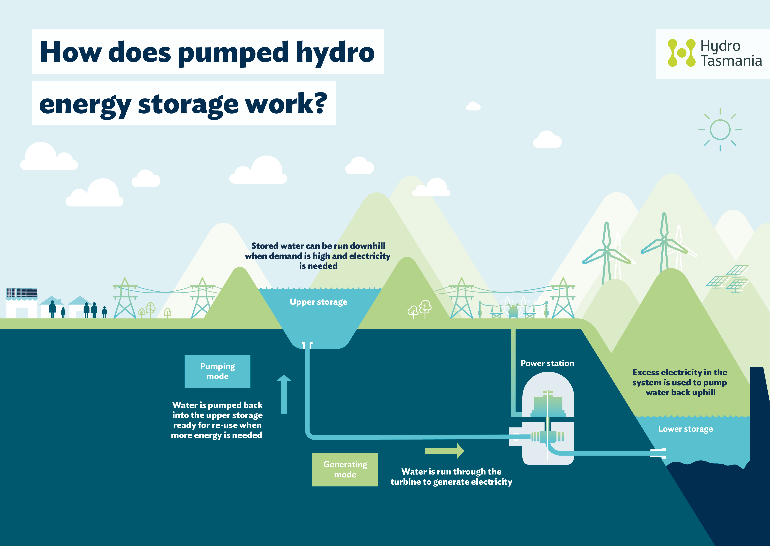Pumped up for energy storage
More than 70% of Australia’s power currently comes from coal-fired power stations that are likely to close in the next few decades.
Wind and solar are becoming the dominant sources of new energy but they are variable. That’s simply because the sun doesn’t always shine and the wind doesn’t always blow.
So, you need energy storage to help balance the system and ensure energy is reliably available when consumers need it.
Quick fact: Pumped hydro energy storage provides around 96% of total worldwide storage capacity.
So how does it work?

Normal hydropower is created by storing water on high ground, and running it downhill to spin a turbine at the bottom. Once the water’s passed one or more turbines, it flows on out to the lake, river or sea.
Pumped hydro captures and stores water in two places, with a steep drop in between. Water can be pumped uphill to re-use for power generation again and again.
When demand is high and supply is needed, the water can be run through a turbine to the lower reservoir, generating electricity.
The water in the lower reservoir gets pumped back uphill when there is excess electricity in the system (which often happens with wind and solar).
The whole system works together like a giant renewable battery – providing the storage, reliability and flexibility that wind and solar can’t offer on their own.
Check out this short video from Hydro Tasmania on how it all works.
Got a question? Get in touch, we’d love to chat with you.
